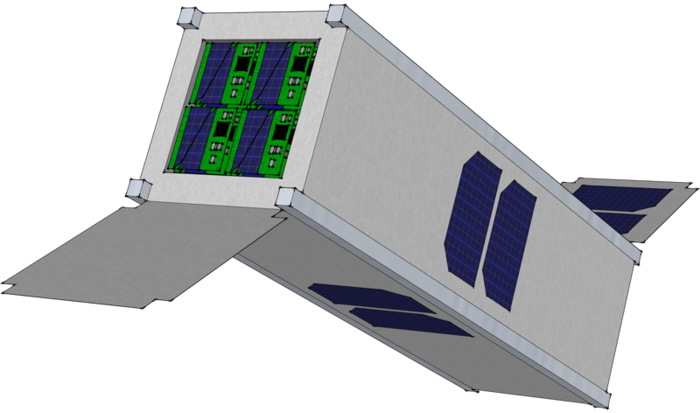Crowd-Funded Satellite May Fall from Space Before Unleashing Tiny 'Sprite' Armada

A crowd-funded satellite launched to space last month might burn up in Earth's atmosphere before it can complete its mission to deploy a fleet of even tinier "sprite" satellites in orbit.
Funded through the website Kickstarter, the small KickSat launched into space along with a group of other cubesats aboard a SpaceX-built Falcon 9 rocket on April 18. The launch, which also sent SpaceX's robotic Dragon capsule to the International Space Station, successfully delivered KickSat into orbit, but the cubesat has encountered problems in recent days.
According to a May 3 update posted on the mission's Kickstarter website by project founder Zachary Manchester, KickSat rebooted its systems on April 30, resetting its master clock in the process. That reset has delayed the deployment of the tiny postage stamp-sized satellites — called "sprites" — by 16 days. The extra wait might mean that KickSat will re-enter Earth's atmosphere before the craft can deploy its satellites, Manchester wrote in the update. [Smartphones in Space: Photos of Tiny, High-Tech Satellites]
"We're certainly disappointed things haven't gone as planned. Besides simply hoping that KickSat stays in orbit until the 16th, when the timer should go off, we're also trying to achieve an uplink to the satellite to command the deployment, though there are many technical issues with that right now," Manchester told Space.com via email.
At the moment, KickSat's batteries are too depleted to manually command it to deploy the sprites, and Manchester doesn't think they will charge enough to perform that command before the satellite de-orbits. In a Kickstarter update, Manchester mentioned that radiation probably caused the reset. The sprites were initially set to deploy on May 4.
KickSat carries 104 sprites that are designed to transmit the initials of people who donated money to the Kickstarter campaign. More than 300 people backed the crowdfunding campaign, which raised $74,586.
While the sprites are tiny, they pack a punch. Each one comes equipped with solar cells, a radio transceiver, and a small computer with sensors and memory, according to a Kickstarter description.
Get the Space.com Newsletter
Breaking space news, the latest updates on rocket launches, skywatching events and more!
"This first version can't do much more than transmit its name and a few bits of data — think of it as a shrunken down Sputnik — but future versions could include any type of sensor that will fit, from thermometers to cameras," according to the Kickstarter page.
KickSat wasn't the only cubesat included in the SpaceX launch. The Falcon 9 delivered four other tiny satellites into space. One of those, developed by NASA, is dubbed PhoneSat and will test if an everyday smartphone can act as the brain of a satellite.
You can learn more about KickSat and keep up with any updates about the status of the mission via Kickstarter: https://www.kickstarter.com/projects/251588730/kicksat-your-personal-spacecraft-in-space/posts
Follow Miriam Kramer @mirikramer and Google+. Follow us @Spacedotcom, Facebook and Google+. Original article on Space.com.
Join our Space Forums to keep talking space on the latest missions, night sky and more! And if you have a news tip, correction or comment, let us know at: community@space.com.

Miriam Kramer joined Space.com as a Staff Writer in December 2012. Since then, she has floated in weightlessness on a zero-gravity flight, felt the pull of 4-Gs in a trainer aircraft and watched rockets soar into space from Florida and Virginia. She also served as Space.com's lead space entertainment reporter, and enjoys all aspects of space news, astronomy and commercial spaceflight. Miriam has also presented space stories during live interviews with Fox News and other TV and radio outlets. She originally hails from Knoxville, Tennessee where she and her family would take trips to dark spots on the outskirts of town to watch meteor showers every year. She loves to travel and one day hopes to see the northern lights in person. Miriam is currently a space reporter with Axios, writing the Axios Space newsletter. You can follow Miriam on Twitter.









